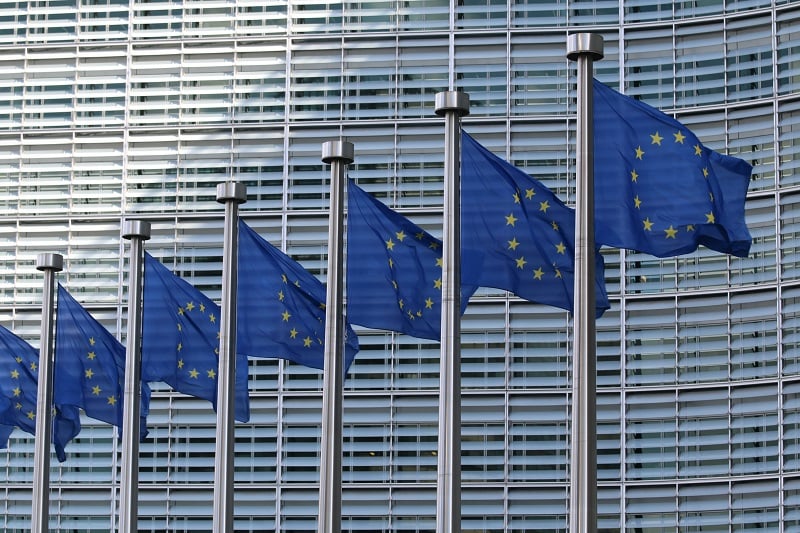
The ESABCC recommends an EU emissions reductions target of 90-95% by 2040, relative to 1990. This target is informed by 36 emissions scenarios taken from an analysis of more than 1,000 pathways, all of which adhere to a Paris-aligned global temperature increase.
Doing so would mean keeping the EU’s cumulative emissions budget for the period between 2030 to 2050 within a limit of 11-14 Gt C02 to have the best chance of meeting 1.5°C with no or limited and temporary overshoot.
That is a very small amount of emissions.
This recommendation becomes a new scientific benchmark for discussions, building on the EU’s 55% emissions reductions by 2030 target. The world’s most ambitious target when launched, it continues to shape EU climate policy this decade through the ‘Fit for 55’ package of legislation.
Based in Copenhagen, the Advisory Board’s latest publication is supported by comprehensive data analysis and scientific credibility, indicating its potential impact in the decade to come.
The next step towards setting the 2040 target will be a formal proposal from the European Commission, expected early next year, which will then be considered by Member States and the European Parliament.
For now, investors will watch closely. Though the political process may temper ambition, a credible, science-based benchmark, with advice on how to achieve it is now public for all to see.
Calculating a fair share
Current science estimates that the world has a remaining carbon budget of around 380 Gt CO2 for a 50% chance of achieving the Paris Agreement’s target of limiting warming to 1.5°C. This budget was 500 Gt CO2 at the start of 2020, as set out by the IPCC in its 2021 AR6 Report which was synthesised earlier this year.
Calculating Europe’s fair share of this rapidly dwindling carbon budget, ESABCC scientists established that the EU carbon budget per capita would be 20-25 Gt in 2040. However, this does not account for its historic emissions, its wealth today or the potential speed at which the bloc can decarbonise.
Raising ambition accordingly, while accounting for scale-up technology challenges and environmental risks, led the ESABCC to a target of between 88%-92% emissions reductions; a 14-16 Gt CO2 budget.
This could be increased to a 95% reduction and an EU carbon budget of just 11 Gt CO2, the report confirms, if those scale-up challenges are overcome. It concludes with a recommended target of 90-95% emissions reductions by 2040.
The 110-page document then goes further, offering general and sector-specific considerations of what should happen to achieve this target, demonstrating feasibility as well as ambition.
The assessed scenarios share several common features, including the significant deployment of wind and solar energy, combined with the electrification of energy use and scale-up of fossil fuel alternatives like hydrogen.
If ambition is maintained this could offer new opportunities for investment in climate solutions, with a direct impact on Europe’s sustainable finance policies.
IIGCC Members: Read about a cumulative metric to improve the assessment of emissions targets.
Real economy impact
Make no mistake – most policymakers and impacted investors are still digesting the implications of the recently agreed Fit for 55 real economy policy targets for 2030.
The revised Renewable Energy Directive, for example, sets an EU target stating that 45% of final energy usage should come from renewable sources by 2030.
Recent updates to the EU’s Emissions Trading System are also predicated on the 55% reduction by 2030 target and will be further guided by the 2040 target when set.
This new recommendation for a 90-95% reduction target by 2040, even if it is tempered in negotiations ahead, will have similar ramifications. It will likely dramatically ratchet expectations.
“The final headline 2040 target will be the result of negotiations between the EU institutions, but legally it must be informed by this report from the ESABCC. And the eventual 2040 target will then lead to new and more binding sectoral targets,” Michael Button, IIGCC’s Real Economy Lead said:
“It’s a statement of intent that policy will be built around.”
Many investors will hope that this target becomes the catalyst for the enabling policies needed to accelerate the energy transition and achieve net zero by 2050.
If you’d like to take part in our working groups and be the first to see insights and analysis, why not speak to our investor relations manager today to find out more about becoming a part of IIGCC.